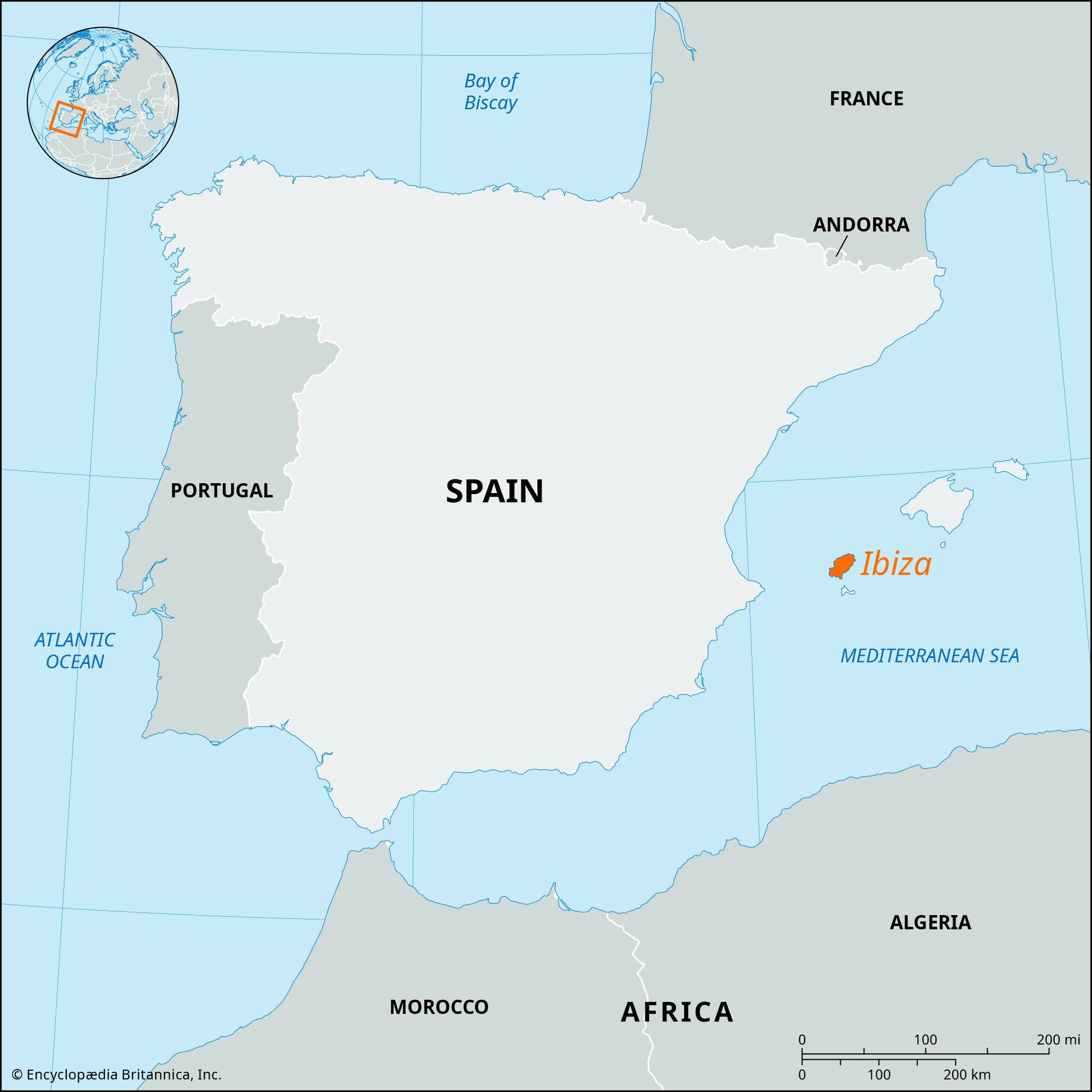Ibiza, globally renowned for its stunning beaches, vibrant nightlife, and idyllic Mediterranean charm, beckons travelers from every corner of the world. But before you pack your bags for this Balearic paradise, the essential question arises: where is Ibiza located?
Ibiza, or Eivissa in Catalan, is nestled in the western Mediterranean Sea, forming part of the Balearic Islands archipelago. This Spanish autonomous community positions Ibiza approximately 50 miles (80 kilometers) southwest of Majorca, the largest island in the Balearics, and significantly off the eastern coast of mainland Spain. Geographically, Ibiza is the third largest of the Balearic Islands, after Majorca and Menorca. Its strategic location in the Mediterranean has historically rendered it a point of considerable importance, acting as a cultural and commercial crossroads for millennia.
The island’s landscape is characterized by a hilly terrain, culminating in La Atalaya, the highest peak at 1,558 feet (475 meters). Notably, the northern coastline dramatically transforms into a costa brava, a rugged coast marked by imposing cliffs that soar to over 800 feet (240 meters). These cliffs are interspersed with calas, picturesque small coves that are typical of the Balearic coast and offer secluded spots of natural beauty. In contrast to the rugged coast, Ibiza also features several fertile, irrigated lowlands, and the hillsides are extensively terraced, reflecting centuries of agricultural adaptation to the Mediterranean environment.
 Ibiza location map within Balearic Islands, Spain
Ibiza location map within Balearic Islands, Spain
Historically, Ibiza’s location made it a coveted strategic outpost. In ancient times, the island was first inhabited and significantly developed by the Phoenicians, followed by the Carthaginians. These ancient civilizations recognized Ibiza’s pivotal position in Mediterranean trade routes. The island served as a crucial trading hub and naval base, linking North Africa, the Iberian Peninsula, and other Mediterranean regions. Today, Ibiza boasts notable archaeological sites that stand as testaments to this rich past, with relics preserved and displayed in the Archaeological Museum located in Ibiza City, locally known as La Vila.
While agriculture on Ibiza is largely for local consumption, the island has historically exported almonds, dried figs, and apricots. However, for centuries, salt production through seawater evaporation has been Ibiza’s primary export, leveraging its coastal location and climate. Fishing and charcoal production also contribute to the local economy, with surpluses shipped to mainland Spain.
In more recent history, particularly since the late 20th century, Ibiza has experienced substantial population growth driven by immigration and the burgeoning tourism industry. The island’s appealing mild winter climate and its famed beaches have transformed it into a global tourist destination. The most populous areas on the island include Ibiza City, San Antonio, and Santa Eularia del Río, each offering distinct attractions and contributing to Ibiza’s diverse appeal.
Recognizing its exceptional natural and cultural significance, UNESCO designated Ibiza as a World Heritage site in 1999. This prestigious designation acknowledges the island’s unique and diverse ecosystems, as well as its biodiversity and cultural heritage. Ibiza’s commitment to preserving its natural environment while embracing tourism underscores its value beyond just a holiday destination.
In conclusion, Ibiza is geographically situated in the western Mediterranean Sea as part of Spain’s Balearic Islands, southwest of Majorca. Its location has been instrumental in shaping its history, culture, and economy, evolving from an ancient strategic outpost to a modern tourism hotspot celebrated for its natural beauty and vibrant atmosphere. Understanding where Ibiza is not only pinpoints it on a map but also unlocks the layers of history and natural allure that make this island a truly unique destination.
